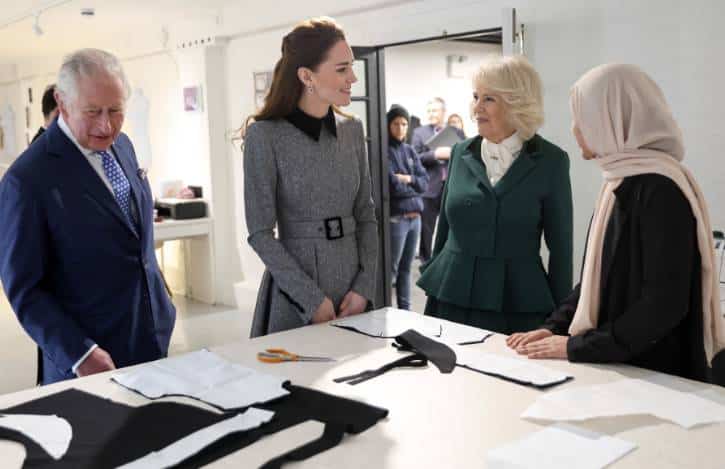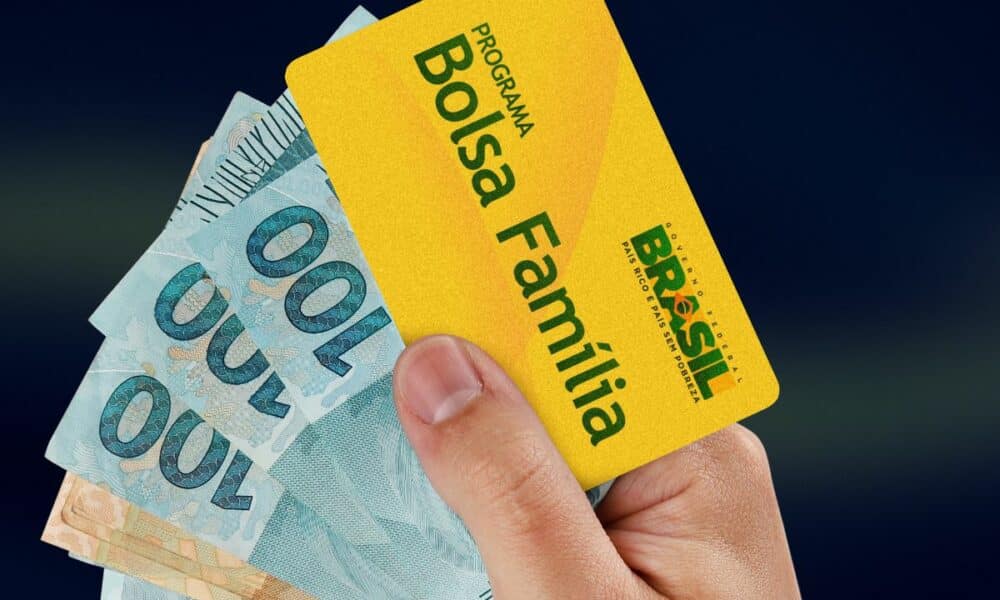William and Kate prepare for royal leadership amidst health challenges of King Charles III
Over the past year, Prince William and Kate Middleton have significantly intensified their preparation for leadership roles within the British monarchy. Their growing responsibilities come at a time when the health of King Charles III has necessitated a redistribution of royal duties. Diagnosed with cancer in early 2024, the king’s treatment has limited his capacity for official engagements, prompting his eldest son and daughter-in-law to step into prominent roles. Simultaneously, Kate Middleton’s recovery from her own health challenges in 2024 has added an emotional dimension to their public and private lives, as they navigate these pivotal transitions in the royal family.
The health concerns surrounding King Charles III have had profound implications for the future of the monarchy. At 76 years old, the king has shown resilience while managing his cancer treatment, which includes regular chemotherapy sessions. Despite this, his ability to fulfill the rigorous demands of his role has diminished, leading to a strategic increase in Prince William’s and Kate Middleton’s involvement in key affairs of state. These circumstances have underlined the importance of readiness and continuity within the royal institution, as Charles continues to champion his longstanding commitments to environmental and social causes while relying on his heirs for support.
Kate Middleton’s journey through her health crisis in 2024 has been marked by strength and resilience. Undergoing surgery in January and later being diagnosed with cancer, the Princess of Wales took several months away from royal duties for intensive treatment. Throughout this period, Prince William balanced his commitments to public life with his responsibilities as a husband and father of three. As Kate returned to her public role, her recovery symbolized not only her personal fortitude but also the unwavering unity within the royal family during challenging times.
The evolving role of William and Kate
In response to the dual health challenges within the family, Prince William and Kate Middleton have assumed a more prominent role in the monarchy’s public engagements. Their participation in global and domestic events has underscored their readiness to lead, showcasing their diplomatic skills and ability to connect with diverse audiences. For instance, in 2024, William represented the monarchy at the reopening of Notre-Dame Cathedral in Paris, engaging with world leaders and strengthening international relations.
Domestically, Kate’s return to public life has been equally significant. Resuming her work with mental health initiatives and childhood education, she has reaffirmed her dedication to causes that resonate deeply with the public. This strategic combination of international diplomacy and local advocacy has reinforced the couple’s position as forward-thinking leaders prepared to navigate the complexities of modern monarchy.
Significant milestones for the royal family in 2024
- William represented King Charles III during the reopening of Notre-Dame Cathedral, demonstrating leadership on the global stage.
- Kate resumed her role in mental health advocacy, highlighting her personal connection to the cause.
- The couple continued their focus on sustainability, aligning with Charles’s environmental initiatives while bringing a contemporary approach.
Historical context of transitions in the monarchy
The British monarchy has witnessed numerous transitions, each shaped by its historical and social context. King Charles III’s ascension in 2022 marked the end of Queen Elizabeth II’s historic reign, introducing a new chapter for the institution. His health challenges in 2024 have accelerated discussions about the future, bringing the preparation of William and Kate into sharper focus.
William and Kate’s approach reflects a balance between honoring tradition and embracing modernity. Their emphasis on addressing contemporary issues such as climate change, mental health, and social equity resonates with younger generations. This alignment with current societal values strengthens the monarchy’s relevance, even as it upholds its historic legacy.
Preparing the next generation of royalty
Prince George, the eldest son of William and Kate, has also begun his journey toward assuming future royal responsibilities. At just 10 years old, he has made select public appearances, following a gradual introduction similar to his father’s early experiences. This careful preparation ensures that George will be well-equipped to navigate the expectations of his role when the time comes.
The involvement of younger royals like George signals a long-term strategy for ensuring the continuity of the monarchy. By fostering a sense of duty and awareness from an early age, William and Kate are laying the foundation for a seamless transition across generations.
Public engagement and impact on the monarchy
The royal family’s activities have consistently drawn significant public attention, amplified by their presence on social media platforms. Posts featuring William and Kate often receive millions of interactions, reflecting their enduring popularity. Kate’s recovery journey, in particular, has resonated deeply with audiences, drawing widespread admiration and messages of support.
The monarchy’s ability to engage with the public through digital platforms has become increasingly important, allowing for real-time interaction and fostering a sense of connection with audiences around the world. This modern approach complements the institution’s traditional outreach efforts, bridging the gap between past and present.
Curiosities and historical facts about the royal family
- Kate Middleton will be the first non-aristocratic queen consort in nearly five centuries.
- Prince William, born in 1982, represents a generational shift in royal leadership as he prepares to become the first king of the 21st century.
- Prince George, third in line to the throne, has already begun receiving education on diplomacy and history to prepare for his future role.
The challenges of balancing tradition and modernity
As the monarchy adapts to contemporary expectations, striking a balance between tradition and innovation remains a key challenge. William and Kate’s leadership reflects a commitment to upholding the institution’s historic values while addressing pressing global issues. Their focus on sustainability, for example, aligns with Charles’s environmental priorities but incorporates modern approaches to advocacy and action.
This balance extends to their personal lives, as they navigate the demands of public duties alongside their responsibilities as parents. By maintaining this equilibrium, they set an example of adaptability and resilience that strengthens the monarchy’s public image.
Key statistics about the royal family in 2024
- King Charles III, at 76, is the oldest monarch to assume the British throne.
- William and Kate participated in over 120 official engagements in 2024, reflecting their growing leadership role.
- The royal family’s digital presence continues to grow, with millions of followers engaging with their posts on social media.
The road ahead for William and Kate
As they prepare for their eventual roles as king and queen, William and Kate are committed to fostering a monarchy that is both dynamic and inclusive. Their vision emphasizes transparency, innovation, and a deep connection with the public. By addressing contemporary issues and prioritizing the well-being of future generations, they are positioning the monarchy for long-term relevance and success.
This journey reflects not only their dedication to the royal family but also their determination to inspire positive change. Through their actions, William and Kate exemplify the values of resilience, compassion, and leadership, ensuring that the monarchy remains a vital institution in the 21st century.
— The Prince and Princess of Wales (@KensingtonRoyal) December 31, 2024

Over the past year, Prince William and Kate Middleton have significantly intensified their preparation for leadership roles within the British monarchy. Their growing responsibilities come at a time when the health of King Charles III has necessitated a redistribution of royal duties. Diagnosed with cancer in early 2024, the king’s treatment has limited his capacity for official engagements, prompting his eldest son and daughter-in-law to step into prominent roles. Simultaneously, Kate Middleton’s recovery from her own health challenges in 2024 has added an emotional dimension to their public and private lives, as they navigate these pivotal transitions in the royal family.
The health concerns surrounding King Charles III have had profound implications for the future of the monarchy. At 76 years old, the king has shown resilience while managing his cancer treatment, which includes regular chemotherapy sessions. Despite this, his ability to fulfill the rigorous demands of his role has diminished, leading to a strategic increase in Prince William’s and Kate Middleton’s involvement in key affairs of state. These circumstances have underlined the importance of readiness and continuity within the royal institution, as Charles continues to champion his longstanding commitments to environmental and social causes while relying on his heirs for support.
Kate Middleton’s journey through her health crisis in 2024 has been marked by strength and resilience. Undergoing surgery in January and later being diagnosed with cancer, the Princess of Wales took several months away from royal duties for intensive treatment. Throughout this period, Prince William balanced his commitments to public life with his responsibilities as a husband and father of three. As Kate returned to her public role, her recovery symbolized not only her personal fortitude but also the unwavering unity within the royal family during challenging times.
The evolving role of William and Kate
In response to the dual health challenges within the family, Prince William and Kate Middleton have assumed a more prominent role in the monarchy’s public engagements. Their participation in global and domestic events has underscored their readiness to lead, showcasing their diplomatic skills and ability to connect with diverse audiences. For instance, in 2024, William represented the monarchy at the reopening of Notre-Dame Cathedral in Paris, engaging with world leaders and strengthening international relations.
Domestically, Kate’s return to public life has been equally significant. Resuming her work with mental health initiatives and childhood education, she has reaffirmed her dedication to causes that resonate deeply with the public. This strategic combination of international diplomacy and local advocacy has reinforced the couple’s position as forward-thinking leaders prepared to navigate the complexities of modern monarchy.
Significant milestones for the royal family in 2024
- William represented King Charles III during the reopening of Notre-Dame Cathedral, demonstrating leadership on the global stage.
- Kate resumed her role in mental health advocacy, highlighting her personal connection to the cause.
- The couple continued their focus on sustainability, aligning with Charles’s environmental initiatives while bringing a contemporary approach.
Historical context of transitions in the monarchy
The British monarchy has witnessed numerous transitions, each shaped by its historical and social context. King Charles III’s ascension in 2022 marked the end of Queen Elizabeth II’s historic reign, introducing a new chapter for the institution. His health challenges in 2024 have accelerated discussions about the future, bringing the preparation of William and Kate into sharper focus.
William and Kate’s approach reflects a balance between honoring tradition and embracing modernity. Their emphasis on addressing contemporary issues such as climate change, mental health, and social equity resonates with younger generations. This alignment with current societal values strengthens the monarchy’s relevance, even as it upholds its historic legacy.
Preparing the next generation of royalty
Prince George, the eldest son of William and Kate, has also begun his journey toward assuming future royal responsibilities. At just 10 years old, he has made select public appearances, following a gradual introduction similar to his father’s early experiences. This careful preparation ensures that George will be well-equipped to navigate the expectations of his role when the time comes.
The involvement of younger royals like George signals a long-term strategy for ensuring the continuity of the monarchy. By fostering a sense of duty and awareness from an early age, William and Kate are laying the foundation for a seamless transition across generations.
Public engagement and impact on the monarchy
The royal family’s activities have consistently drawn significant public attention, amplified by their presence on social media platforms. Posts featuring William and Kate often receive millions of interactions, reflecting their enduring popularity. Kate’s recovery journey, in particular, has resonated deeply with audiences, drawing widespread admiration and messages of support.
The monarchy’s ability to engage with the public through digital platforms has become increasingly important, allowing for real-time interaction and fostering a sense of connection with audiences around the world. This modern approach complements the institution’s traditional outreach efforts, bridging the gap between past and present.
Curiosities and historical facts about the royal family
- Kate Middleton will be the first non-aristocratic queen consort in nearly five centuries.
- Prince William, born in 1982, represents a generational shift in royal leadership as he prepares to become the first king of the 21st century.
- Prince George, third in line to the throne, has already begun receiving education on diplomacy and history to prepare for his future role.
The challenges of balancing tradition and modernity
As the monarchy adapts to contemporary expectations, striking a balance between tradition and innovation remains a key challenge. William and Kate’s leadership reflects a commitment to upholding the institution’s historic values while addressing pressing global issues. Their focus on sustainability, for example, aligns with Charles’s environmental priorities but incorporates modern approaches to advocacy and action.
This balance extends to their personal lives, as they navigate the demands of public duties alongside their responsibilities as parents. By maintaining this equilibrium, they set an example of adaptability and resilience that strengthens the monarchy’s public image.
Key statistics about the royal family in 2024
- King Charles III, at 76, is the oldest monarch to assume the British throne.
- William and Kate participated in over 120 official engagements in 2024, reflecting their growing leadership role.
- The royal family’s digital presence continues to grow, with millions of followers engaging with their posts on social media.
The road ahead for William and Kate
As they prepare for their eventual roles as king and queen, William and Kate are committed to fostering a monarchy that is both dynamic and inclusive. Their vision emphasizes transparency, innovation, and a deep connection with the public. By addressing contemporary issues and prioritizing the well-being of future generations, they are positioning the monarchy for long-term relevance and success.
This journey reflects not only their dedication to the royal family but also their determination to inspire positive change. Through their actions, William and Kate exemplify the values of resilience, compassion, and leadership, ensuring that the monarchy remains a vital institution in the 21st century.
— The Prince and Princess of Wales (@KensingtonRoyal) December 31, 2024











Post Comment